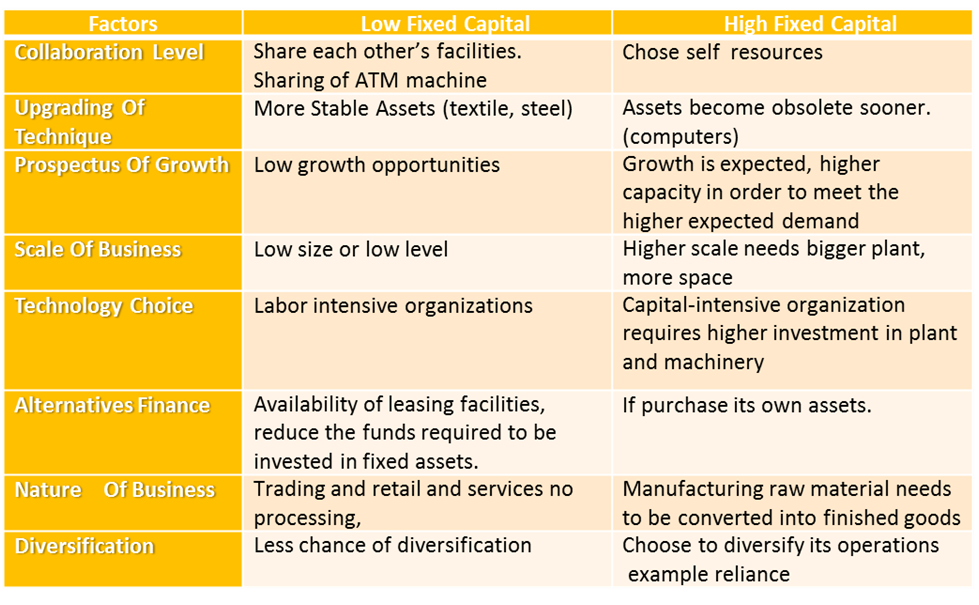- Books Name
- BUSINESS STUDIES-XII
- Publication
- ABCD CLASSES
- Course
- CBSE Class 12
- Subject
- Business Studies
FIXED CAPITAL
Factors affecting the Requirement of Fixed Capital:
- Collaboration Level:
If business organizations share each other’s facilities such collaboration reduces the level of investment in fixed assets. For example, a bank may use another’s ATM, or telecom companies share a common TOWER.
- Upgrading Of Technique:
- If assets become obsolete sooner. For example, computers become obsolete faster and are replaced much sooner. Require higher fixed capital.
- Other business like steel and textile has stable assets and can be used for a longer period.
- Prospectus Of Growth:
- An organization generally aiming for higher growth requires higher investment in fixed assets in order to meet the expected order quickly.
- Scale Of Business:
- A larger organization operating at a higher scale needs a bigger plant, more space, etc. and therefore, requires higher investment in fixed assets when compared with a small organization.
- Technology Choice:
- A capital-intensive organization requires higher investment in plants and machinery as it relies less on manual labor. Labor-intensive organizations on the other hand require less investment in fixed assets.
- Alternatives of Finance:
- Availability of leasing facilities may reduce the funds required to be invested in fixed assets, thereby reducing the fixed capital requirements.
- Nature of Business:
- A trading concern needs lower investment in fixed assets compared with a manufacturing organization; since it does not require purchasing plant and machinery etc.
- Diversification:
- A firm chooses to enter into other sectors/businesses With diversification, fixed capital requirements increase e.g., a textile company is diversifying
Factors affecting fixed assets requirements are:


 ABCD CLASSES
ABCD CLASSES
